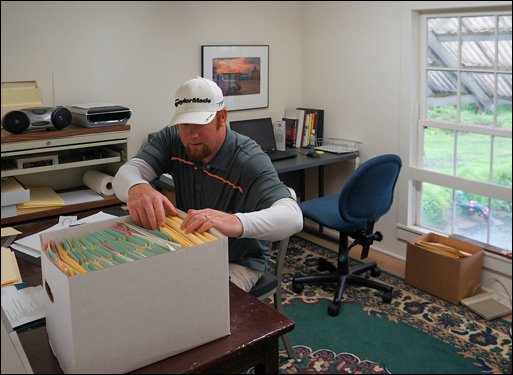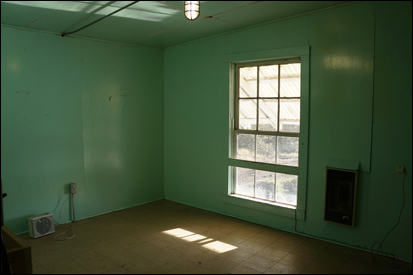An important but mostly unknown part of Thompson’s Mills State Heritage Site is the extensive collection of historical artifacts accumulated over the mill’s 150-year-plus lifetime.
While a small portion of these items are obvious to the mill’s visitors during tours—for example, the mill stones, roller mills, seed separators, scales, and sack sewing machines—thousands of business documents, deeds, wills, accident reports and bills are tucked away in file boxes, and many smaller objects—tools, mounted king crabs, gold teeth, bag tags, and throwable fire extinguishers, to name a few—are scattered throughout the mill buildings.
To ensure that these artifacts may be used, now and in the future, to gain an understanding and appreciation of the mill’s operation, the lives of the owners and workers, and the challenges they had to overcome, the formidable but essential task of taking an inventory—identifying, cataloging, labeling, and storing—has begun.
To assist with this time-consuming work, the Boston Mill Society applied for and was awarded two grants. A 2013 Museum Grant from Oregon Parks and Recreation Department’s Heritage Programs, a branch of the agency that works to preserve the heritage of Oregon throughout the state, provides $7140 for the purchase of equipment and materials necessary to establish a collections “work” room in the Mill, and to develop plans for processing artifacts there with the aid of volunteers.
Thanks to matching funds from OPRD South Willamette Management Unit Manager Julie Whalen’s budget, the former “lunch room” in the Mill has been transformed into an Artifact Processing Center. It is newly painted and sporting upgraded lighting, electrical outlets, a new heater and used but ideal furniture from State Surplus. Funds from the Museum Grant have been used to purchase a camera, flatbed scanner, a laptop computer to document objects and the purchase of special storage materials such as acid-free file folders and storage boxes.
Led by OPRD volunteer and BMS Board Member, Tom Adams, and assisted by volunteers Patrick Newhall and James Muncrief, work has begun on the 80+ boxes of business files in the collection. This process is based on the advice and guidance of Christy Sweet, Museum Curator at Kam Wah Chung Heritage Site, and includes identifying and documenting the contents of each file and exchanging the original file folders with acid free folders. The work requires care and attention to detail, and we are learning about the mind-boggling complexity of the Mill’s products and business dealings, and what it took to maintain the mill as a viable enterprise.
A second grant of $7190 comes from Heritage Preservation’s Conservation Assessment Program (CAP). This 2014 grant makes it possible to bring two museum specialists to the Mill. One person will assess the mill building itself, while the other works with the artifacts collection. From their observations and conversations with staff during the visit they will prepare reports on their findings and provide advice on the efforts necessary to assure the preservation of the mill and its heritage. These assessments will be essential to future success in attracting grants to support restoration of the mill, and the long-term preservation of its museum collection.
Thanks to the continuing work of everyone involved, the museum collection at Thompson’s Mills is on its way to being well-organized and cared for. All of the artifacts and the stories they tell, will eventually be available for visitors to see as they learn the history of Thompson’s Mills and the people who lived there for over 150 years.
The difficult but rewarding task of processing and cataloging artifacts at the Mill would greatly benefit from help from interested volunteers. If you would join us in this exciting endeavor, please contact Park Ranger Tom Parsons (tom.parsons@oregon.gov, 541-491-3611).


